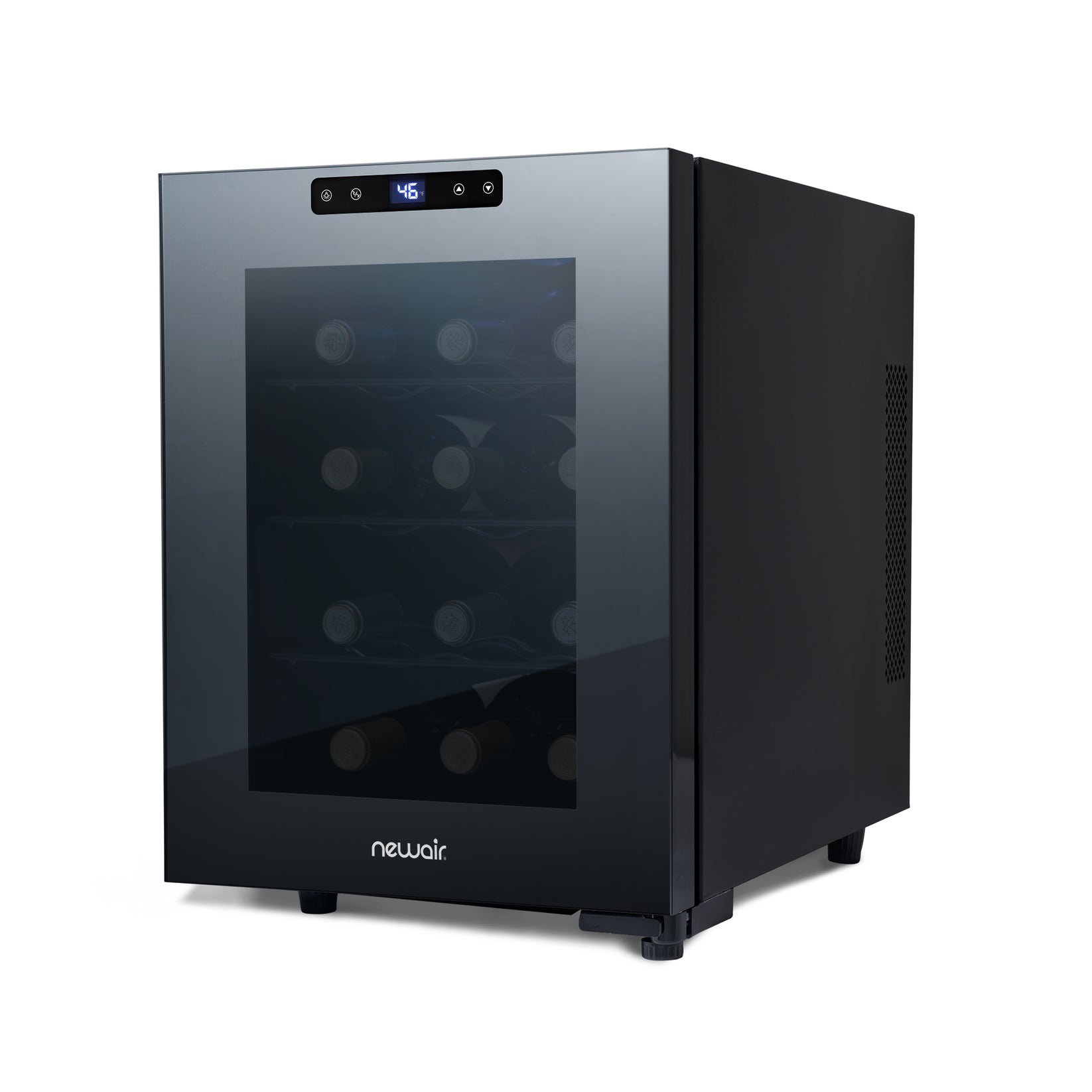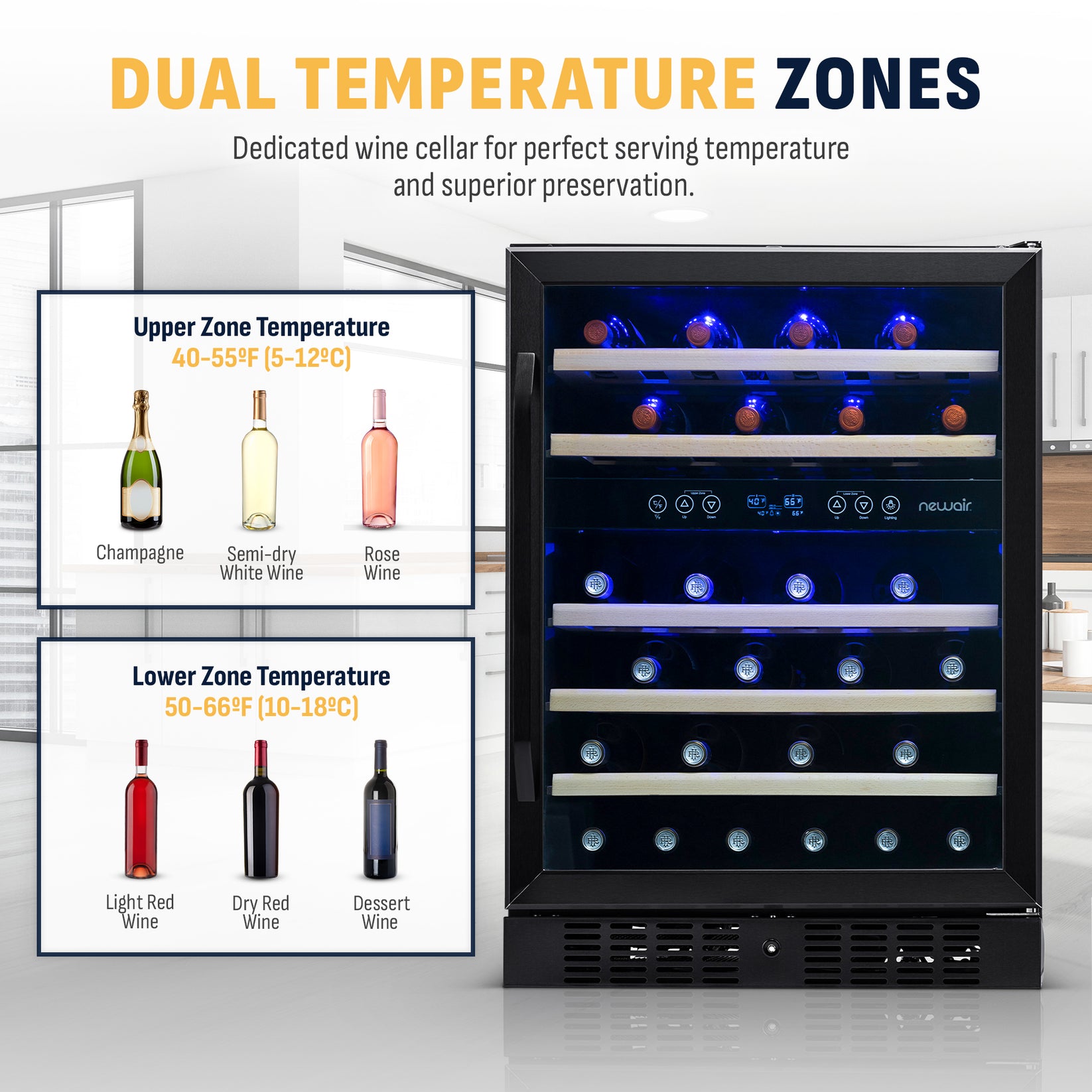Wine Fridges: Single Zone vs. Dual Zone Refrigeration
Wine Fridges: Single Zone vs. Dual Zone Refrigeration
If you’re shopping for a wine fridge, you’ve likely noticed there are two main types: single zone and dual zone. But what’s the real difference, and which one is right for you?
This quick guide gives you the vital information about types of wine fridges, including:
- What a single zone wine fridge is and who it’s best for
- How dual zone wine fridges work and why they’re popular
- Key questions to help you choose the best option for your collection
By the end, you’ll have a clear understanding of how these wine fridges differ, so you can confidently select the one that fits your lifestyle, both now and in the future.
What Is a Single Zone Wine Fridge?
A single zone wine fridge is the most common type of wine cooler. Whether it’s a space-saving countertop model or a larger freestanding unit, it features one temperature-controlled compartment for your entire collection. All of your bottles are stored at the same temperature you select.
Single zone wine fridges make sense if you are storing a small collection or are a casual wine drinker. They free up space in your regular kitchen refrigerator while letting you house your wine at the perfect temperature.
Who else might find a single zone wine fridge handy?
- Wine enthusiasts with larger collections who already have a cellar or another fridge but want a unit in their entertaining space to bring bottles to the ideal serving temperature.
- Snowbirds and RV travelers who want to enjoy wine on the road and need a compact, dedicated fridge to save space in their main refrigerator.
- Wine drinkers with ample fridge space who prefer to store their collection separately and use their kitchen refrigerator for chilling bottles just before serving.
- Those who drink only one type of wine (all red or all white) and benefit from keeping their collection at one consistent temperature.

Featured SKU: NWC12TBK00
Why Proper Wine Storage Temperature Matters
If you’re just starting your wine journey or expanding your collection, understanding storage conditions is essential. Wine is sensitive to temperature changes, and both excessive heat and cold can damage its flavor, aroma, and longevity.
Most people know to keep wine away from freezing temperatures, but many don’t realize how hot it can get in a kitchen cabinet or on top of the refrigerator. These spots often fluctuate in temperature, creating less-than-ideal conditions.
If you plan to enjoy your wine within a few weeks, improper storage likely won’t make a noticeable difference. But over a month or two, keeping bottles at the wrong temperature can cause them to degrade. Wines may lose their clarity and color, develop sour or vinegary flavors, and suffer from cork damage that lets in unwanted oxygen. Extended exposure to sunlight can speed up this decline even further.
A wine fridge is a great solution to these storage challenges. Plus it lets you store your wine horizontally, which keeps the cork moist to prevent it drying out and shrinking. The specialized racks are designed to limit vibration and movement, helping wines age gracefully and develop richer flavors over time.
The ideal storage and serving temperature depends on the type of wine you’re enjoying. We’ll cover the details in the next section on dual zone wine fridges. These models make it simple to store both reds and whites at their perfect temperatures, so you don’t have to compromise when building a mixed collection.
Dual Zone Wine Fridges: Two Temperature Compartments
A dual zone wine fridge is designed with two separate compartments, each with its own temperature controls. This flexibility allows you to store different types of wine, or even other beverages, at their ideal temperatures in one unit.
Dual zone wine fridges are the perfect solution for a number of scenarios:
- You want to age some bottles at one temperature while keeping others ready to serve at a different temperature.
- Have a collection split between reds and whites, which require different serving conditions.
- Share your fridge with beer drinkers, since one zone can easily be set colder for frosty brews.
- Run a small business like a café, bistro, or sandwich shop, and need multiple wines accessible in one place.

Featured SKU: NWC046BS00
How Wine Temperatures Compare
So, how different are wine storage needs from your everyday refrigerator? Quite a bit. Your kitchen fridge is typically set around 40°F, which is ideal for keeping food fresh but too cold for wine. Bottles stored at this temperature for long periods can lose their character and age poorly.
For long-term storage, wine should be kept at a stable 55–57°F. When it comes to serving, however, the ideal temperature varies by type of wine. Here’s a quick guide to help you serve your bottles at their best:
| Type of Wine | Ideal Serving Temperature |
|---|---|
| Pinot Noir | 50-55°F |
| Beaujolais, Valpoliciella | 54°F |
| Dolcetto, Cotes du Rhone, Merlot | 55°F |
| Chinon, Port, Madeira | 57°F |
| Chianti, Zinfandel | 59°F |
| Châteauneuf-du-Pape, Rioja, Pino Noir | 61°F |
| Barolo, Burgundy | 63°F |
| Bordeaux, Cabernet Sauvignon, Shiraz | 65°F |
| Sauvignon Blanc | 45°F |
| Pinot Grigio | 45°F |
| Semillon | 45°F |
| Riesling | 45-50°F |
| Chardonnay | 50°F |
| Rosé | 50°F |
| Champagne, Prosecco | 40-50°F |
Which Type of Wine Fridge Is Right for You?
Now that you know the differences between single zone and dual zone wine fridges, which one is best for your needs? As you read above, there are different scenarios where one or the other makes more sense. Both options come with convenient features such as:
- Built-in and freestanding models
- Different capacities and dimensions
- Locking doors with UV protection
- Interior lighting for easy viewing
- Exterior LED controls and displays
- Flexible shelving designed for wine storage
To narrow down your choice, consider these questions:
How often do you drink wine?
Casual drinkers may prefer the simplicity of a single zone model.
Serious wine lovers may benefit more from the flexibility of a dual zone unit.
Is your collection growing?
A dual zone fridge is better for expanding collections with a mix of reds, whites, and sparkling wines.
Do you entertain often?
Either type can work, but a dual zone fridge adds flexibility when hosting.
What do people in your household drink?
If your group is split between red and white wine—or wine and beer—a dual zone fridge is the best fit.
Where will you put your wine fridge?
Single zone fridges are often more compact and portable.
Dual zone fridges tend to be larger and make a great statement in kitchens, home bars, or rec rooms.
Are you remodeling or upgrading a kitchen, home bar, or a rec room?
A built-in dual zone fridge can elevate the look and add value to your renovation.
Newair Has a Fridge for Every Wine Drinker
Whatever type of wine fridge you decide on, and whatever size you need, Newair has a model for you. Shop online from the comfort of your sofa, and enjoy fast, reliable delivery from a US-based company.
When your new wine fridge arrives, don’t forget to register it! You’ll want to take advantage of Newair’s full-year warranty and noteworthy customer service.








